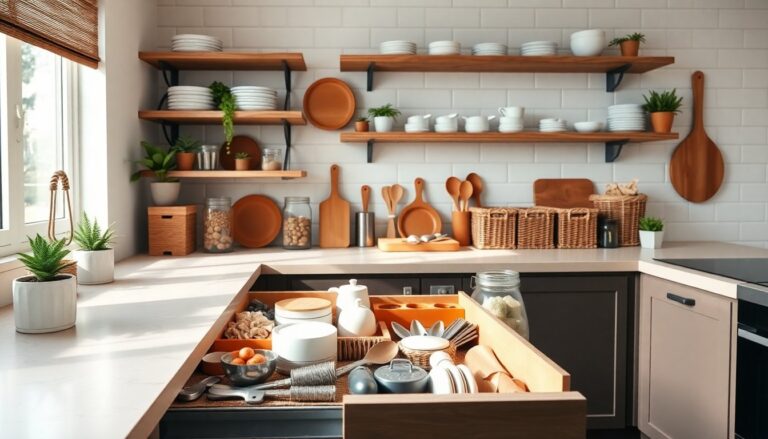Argomenti trattati
Feeling overwhelmed by a lack of storage? You’re not alone. Many individuals dream of having more room in their cabinets and closets, yet often the space is filled with items no longer needed. Take, for instance, a kitchen drawer stuffed with cookie cutters and gadgets—most of which are redundant for those who don’t bake. This scenario is common, and the reality is that better use of that space can be achieved.
Clutter doesn’t just occupy physical space; it clutters our minds as well. According to professional organizer Bridget Urgo, co-owner of The Settler, many underestimate the mental burden that clutter imposes. She emphasizes that once individuals start removing unnecessary items, they often find it easier to locate belongings, think more clearly, and avoid unnecessary purchases of duplicates.
Items to let go of for a more organized home
Vases and flower arrangements
After receiving a bouquet, many are left with a vase that ends up stashed away in a closet among others. As organizer Maura Fitzgerald points out, you are likely to reach for your favorite vase for personal arrangements, such as a cherished Tiffany vase from a wedding. Instead of cluttering your space with unused vases, consider returning them to your local florist.
Kitchen gadgets and appliances
The kitchen is a major culprit of clutter. Many accumulate specialized tools like an apple corer or a mango slicer that take up valuable drawer space. Urgo suggests simplifying your approach by using a knife instead. Additionally, trendy appliances like Instant Pots often gather dust in storage. If certain gadgets are not being utilized, consider donating them or checking with local libraries that might accept appliance rentals.
Digital and paper clutter
Old electronics and accessories
Outdated gadgets—cracked phones, obsolete laptops, and various cords—clutter the drawers of many homes. Often, items are held onto out of fear they might be needed again, but the truth is, most remain unused. Before disposing of these items, ensure to wipe any sensitive information. After erasing data, either recycle or return them to the manufacturer for potential credit on new devices.
Excess bags and wrapping materials
Many homes are overflowing with reusable tote bags and gift-wrapping supplies that are seldom used. Fitzgerald advises limiting yourself to no more than five bags. The excess can be repurposed for donations to local charities or food banks, where they can help others in need.
Managing paper clutter and sentimental items
Paperwork and kids’ creations
For many families, paper clutter accumulates in the form of old receipts, school projects, and instruction manuals. While parting with children’s artwork can be challenging, organizers like Nikki Boyd recommend that children select their favorite pieces to keep. For the rest, consider capturing images to create a digital archive. This approach preserves memories without adding to physical clutter.
Gift supplies and decorations
Surprisingly, many homes harbor an abundance of gift-wrapping supplies, from ribbons to boxes. Shira Gill suggests streamlining this collection by investing in a dedicated storage solution, such as an Elfa Utility Mesh Gift Packaging Rack, to keep everything organized and minimize excess.

